What's not to love about the Persian cat? That smooshed face. Those big eyes. That luxuriously long fur. The Persian is one of the most popular cat breeds in the United States because of its unique look and calm demeanor. This cat not only needs to be brushed but loves being brushed. You will want to pamper a Persian cat endlessly.
Persians are a glorious sight to behold, coming in a wide variety of colors and patterns — each one stunning and adorable. But that one-of-a-kind look also comes with plenty of potential health problems. This is a breed that requires special care and a trusted family veterinarian. But families willing to put in the extra work are rewarded with one of the most chill and cuddly cats out there!
Persian Cat Breed Origin & History
The long (very long) history of the Persian cat is continuously updating as new information surfaces. There are said to be Persians in hieroglyphic records as early as 1684 B.C.
Longhaired cats were first noted in Europe in the mid-1500s. They were thought to be brought over by Roman and Phoenician caravans from Iran (known then as Persia) and Turkey. It's believed that their long hair — a recessive gene — was a sudden mutation within the cat population that lived in the colder regions of Persia.
An Italian traveler, Pietro Della Valle, further spread Persian cats throughout Europe in the 1600s. In his manuscript, he described Persians as gray cats with long, silky fur. Other travelers brought Persian and Angora cats into France and England, where they instantly became a hit. The cats were highly prized for their beautiful coats and calm temperament, making them a favorite among royalty. In the 1900s, Persians were still living the high-life overseas. Queen Victoria even owned two Persians.
When Persians arrived in America in the late 1800s, breeders and cat fanciers were immediately fascinated. Persians consistently placed at cat shows and quickly became one of the most popular pedigreed cats in North America. Persians are so popular that there are divisions within the breed for particular colors and patterns.

Persian Cat Personality
What is Persian cat breed personality? Persian personality may have been prized early on for their long, soft fur. But what has made them continuously popular throughout the world is their calm disposition. This is not a cat you'll find energetically racing throughout the house, climbing recklessly over furniture, or chasing toys without prompting. You'll honestly have to nudge them off the couch if you want them to play.
RELATED: Cat Exercise: Different Ways to Play With Your Cat
While they may not be itching to swat at the ribbon you keep dangling in front of their face, Persians will never say no to petting and cuddling. They love nothing more than receiving attention from their favorite humans. This docile kitty will enjoy spending quality time with you but doesn't mind lounging around on their own when you're gone.
Persians aren't the most curious cats. You won't find them digging in your drawers or trying to get into your cabinets. Still, they're an intelligent cat breed that knows exactly what to do to get your love and affection.
Cat Breed Characteristics (Physical)
The Persian is a well-proportioned medium-sized cat with a big head. They are known for their incredibly fluffy coat and their flat, snub nose. The Persian has a distinct appearance that's just dazzling all around. They look nothing like any other cat breed out there!
Size
While their endless fur hides their true appearance, Persian cats are medium-sized cat that weighs between 7-12 pounds. They're often 10 to 15 inches tall. According to the Cat Fancier's Association (CFA), they're heavily-boned and round. They have a broad and deep chest, "massive" shoulders and rump, and a short tail.
Head
The CFA describes the Persian cat's head as "massive and round." Their face is also round, with a squat nose, a broad jaw, and large eyes. Their round, widely set eyes give them a friendly expression. The Persian's ears are small with rounded tips.
Eye Color
Persians often have brightly colored eyes. They can have just about every eye color under the sun. Their eye color corresponds with their coat color.
Legs & Paws
Persians have short and muscular legs. Their front and back legs are both straight, and their paws are round and large.

Coat
Its coat brought the Persian its fame. Their long hair is thick and glossy throughout the body. There are many accepted coat colors and patterns, split into different divisions.
- Solid Color Division: Persians in the solid color division come in white, blue, black, red, cream, chocolate, and lilac. They all have specific required colors for their eyes, paw pads, and "nose leather." For example, brown Persian Cat has a brown nose, cinnamon-pink paw pads, and brilliant copper eyes.
- Silver and Golden Color Division: Silver Persians can come in many different varieties, including chinchilla silver and shaded silver. It's the same for golden Persians. Each color in this division has specific requirements for eye color, paw pad color, and nose leather color.
- Shaded and Smoke Color Division: Persians in this division include shaded cameo, shell tortoiseshell, shaded black, shaded blue, red smoke, and chocolate tortoiseshell smoke. Each of these specific colors has requirements for the eyes, paw pads, and nose leather.
- Tabby Color Division: There's a huge amount of tabby patterns for Persians. Think lilac patch tabby, cameo tabby, cream tabby, etc. In a cat show, Persians' have their tabby patterns judged while they are standing.
- Parti-Color Division: This group includes tortoiseshell, blue-cream, lilac-cream, and chocolate tortoiseshell Persians. "Tortoiseshell" is a black coat with red spots mixed in.
- Himalayan Color Division: This is where it can get even more confusing! You may have heard of a Russian Blue Himalayan Persian cat. A Himalayan is actually a sub-breed of Persian. They are exactly like the Persian in every way except for their coat pattern. They are colorpoint cats, meaning their body is one solid color, and then their ears, legs, feet, tail, and mask are a contrasting color. Himalayan Persians include chocolate point, flame point, and tortie lynx point.

Persian Cat Lifespan
A healthy Persian that's consistently brought to vet checkups can live up to 17 years on average.
Persian Cat Breed Care
Just how the Persian cat's coat is very important in cat shows, it's also something you should be paying close attention to at home. Starting when they are a kitten, brush your Persian frequently to get them used to the routine. You'll be brushing them often to avoid extreme matting, excessive shedding, and hairballs.
RELATED: Cat Hairball Home Remedies [Top 12 Tips]
How to Groom
First, choose a comb that works with the Persian's special coat. Try a metal comb with narrow teeth on one end and wide-spaced teeth on the other. This works well to detangle their fur. Follow up with a metal slicker brush to remove excess fur. It's very important to brush a Persian cat's coat a certain way.
Part their fur and then use the wide-spaced teeth on the comb to brush out any loose knots and tangles. Use the slicker brush on their fur in sections. Once all loose hair is removed, comb your cat's entire body with the narrow-toothed side of the comb. You will need to do this every day.
Health Problems
One study found that well over 60% of Persian cats had at least one health disorder. Because of these often severe problems, animal activists have often called on cat fanciers to change the Persian's breed standards. The International Cat Association and the Fédération Internationale Féline require that the Persian's nostrils should be open and allow "free and easy passage of air." It's very important to purchase your Persian kitten from a reputable breeder.
The Persian's unique face presents some challenges on its own. Because of their flat features, their eyes aren't well-protected, making it more common to develop ulcers. They are also prone to improper tear drainage (lacrimal tears). This discharge can get in the folds of the face, making them look dirty. Use vet-approved wipes to clean their teary face.
The Persian's flat face can sometimes make it harder for them to eat as well. Make sure you provide your kitty with shallow cat bowls to avoid the challenges they'd face with a high-sided dish.

It also goes without being said that Persians are strictly indoor kitties. Staying inside keeps their luscious fur healthy and clean. Since Persians are not the quickest cats, staying inside also protects them from other cats, wild animals, dogs, and cars.
Breathing Difficulties
Just like their flat face can make it tough to eat, the Persian's facial features can also lead to breathing difficulties. Many Persians will have shortness of breath, which may be why they are considered lazy cats. CBD oil may help support their overall well-being and promote relaxation.
Eye Conditions
Persians also tend to develop eye problems, including malformed tear ducts and entropion. That's when the eyelids fold inward, causing their eyelashes to rub against their cornea. This condition can lead to pain and even cornea damage.
Progressive Retinal Atrophy (PRA)
A degenerative eye disease called progressive retinal atrophy is also known to affect Persians. Some breeders believe it's only prevalent in chocolate and Himalayan Persian lines, but there's been no link between coat color and the development of this eye disease. Other common conditions include:
- Facial fold pyoderma
- Urinary tract disease
- Heat sensitivity
- Fungal infection
- Systemic lupus erythematosus
Polycystic Kidney Disease (PKD)
Around 36 to 49% of Persian cats will develop polycystic kidney disease, which causes kidney failure. They are also prone to autosomal dominant polycystic kidney disease, where cysts develop and grow on their kidney, leading to enlargement. You may notice your Persian excessively drinking and urinating, as well as weight loss and lethargic behavior. Thanks to DNA testing, responsible Persian breeders produce cats that don't carry the gene for ADPKD.
Nutrition
Persian cats love their food. An automatic feeder will become your — and your cat's — best friend. Instead of your Persian eating an entire day's worth of food right when you scoop it out in the morning, a timed feeder will give them a portion of their daily intake throughout the day. This will keep them healthy and happy. Plus, pairing it with CBD treats can provide extra relaxation and wellness benefits for your feline friend.

You'll know how much food your cat needs per day by checking the label on the bag of commercial cat food you pick. They'll recommend the right amount for your cat's age, size, and lifestyle.
It's also important that the wet or dry cat food you pick has the proper ingredients and nutrients to support healthy growth and wellness. Pick food with a named protein source as the top ingredient, avoiding options with a large amount of carbohydrate "fillers" like corn and wheat (these have little nutritional value).
Children & Other Pets
Persians are calm and loving cats, but they can get overwhelmed with too much noise and chaos. Ensure that your Persian kitten is introduced to various people (all ages and genders) and animals (other cats and dogs) at an early age to get them used to social interactions. Persians are smart enough to adapt to different situations if given the proper introduction.
If the children are gentle with your Persian, they will adore the attention of these small humans. Persian cats are known to go along with some pretty funny scenarios, like fake tea parties. Though, they can be a bit less tolerant of roughhousing and uncomfortable handling than other cats. Provide your Persian with a cat tree or another location in the house where they can stay out of reach from rowdier kids if they've had enough.
Persian cats don't mind other pets in the home. They get along with just about anyone if they are respected. They might get annoyed with younger kittens who won't stop playing with their tail, but that's what cat shelves and cat trees are for.
RELATED: How to Introduce Cats: Successful Methods & What Not to Do

Price and Fun Facts
The Persian cat can cost up to $5,000, depending on its heritage and breeder. Most breeders will also offer three Persian variations. A show-quality Persian has the flattest face of all three types, even described as having little to no nose. The "doll face" Persian is a breeder quality. This version has a rounder face and a more prominent nose. There's also pet quality, which will have even more of a nose. Pet quality Persians usually have fewer health problems since their faces aren't as flat.
There are over 80 color combinations for Persians! The most popular coat variations for Persians are:
- Bluepoint
- Seal point
- Tortie point
- Flame point
In the United States, breeders attempted to make silver Persians their own breed, called Sterlings. This trial was rejected. Persians of all colors continue to be popular in the United States, although its prominence in Europe is dwindling. This could be due to stricter policies on the Persian's breed standards in European countries.
While Persians are said to be smart, some breeders will tell you they're actually quite stupid. This stereotype started because Persians can be slower to develop than other breeds. Sometimes a Persian kitten as old as eight weeks will still not understand the concept of a litter box. Others think it's their laziness and lack of curiosity that makes people believe they're dumb (they're not).

More About This Breed
Sweet, docile, and polite, the Persian is a majestic-looking cat who wants nothing more than to spend time with its favorite people. Persians can live long, happy lives with regular vet visits and daily brushing, enjoying all the head scratches and cuddling you can offer!

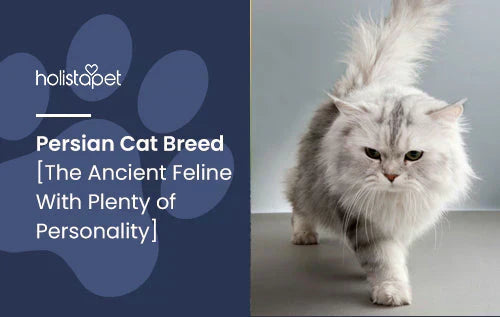
 CBD Oil for Cats - Fast Acting
CBD Oil for Cats - Fast Acting
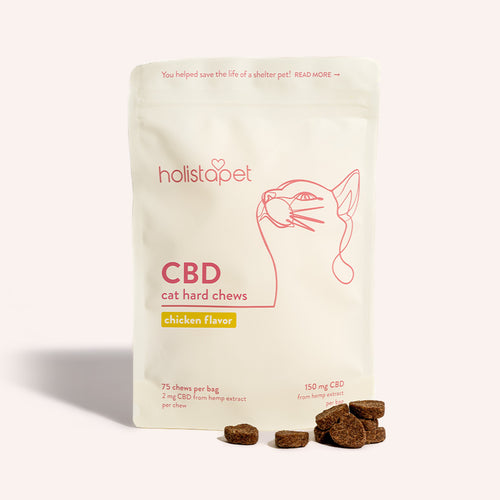 CBD Cat Treats - Easy Dose
CBD Cat Treats - Easy Dose
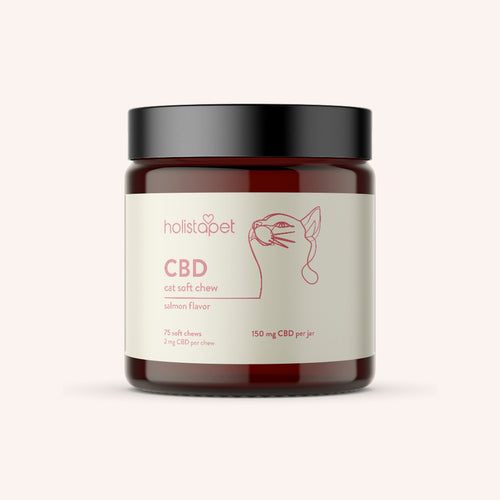 CBD Calming Chews for Cats - Highly Rated
CBD Calming Chews for Cats - Highly Rated
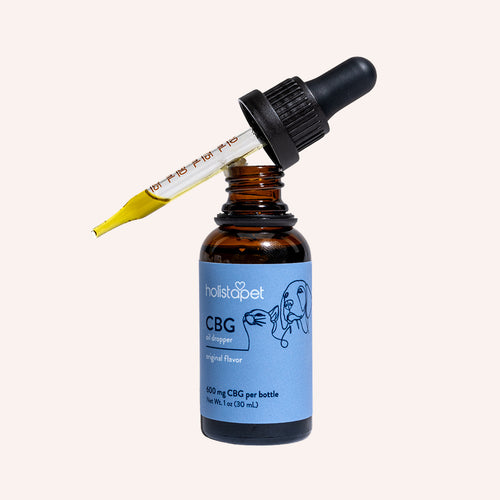 CBG Oil for Dogs and Cats - Loved by Thousands
CBG Oil for Dogs and Cats - Loved by Thousands


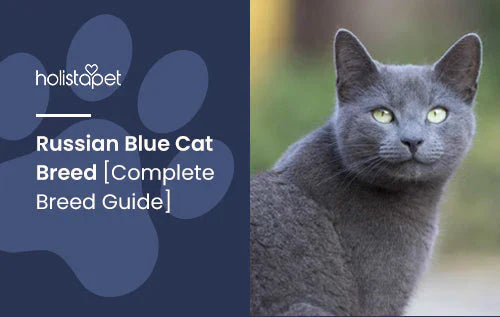
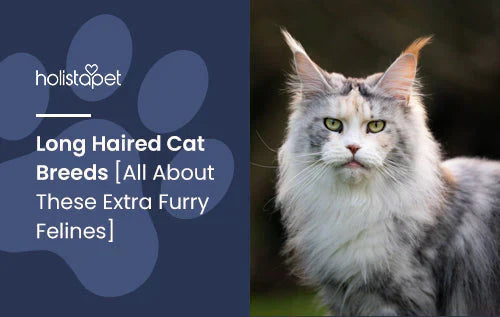

2 comments
Sabana Yesmin
I am to buy cat
Cat Exotica
Wonderful article on Persian cats! The detailed insights on their personality, care needs, and history make it a great resource for cat lovers. Thanks for sharing such valuable information.
Leave a comment
All comments are moderated before being published.
This site is protected by hCaptcha and the hCaptcha Privacy Policy and Terms of Service apply.